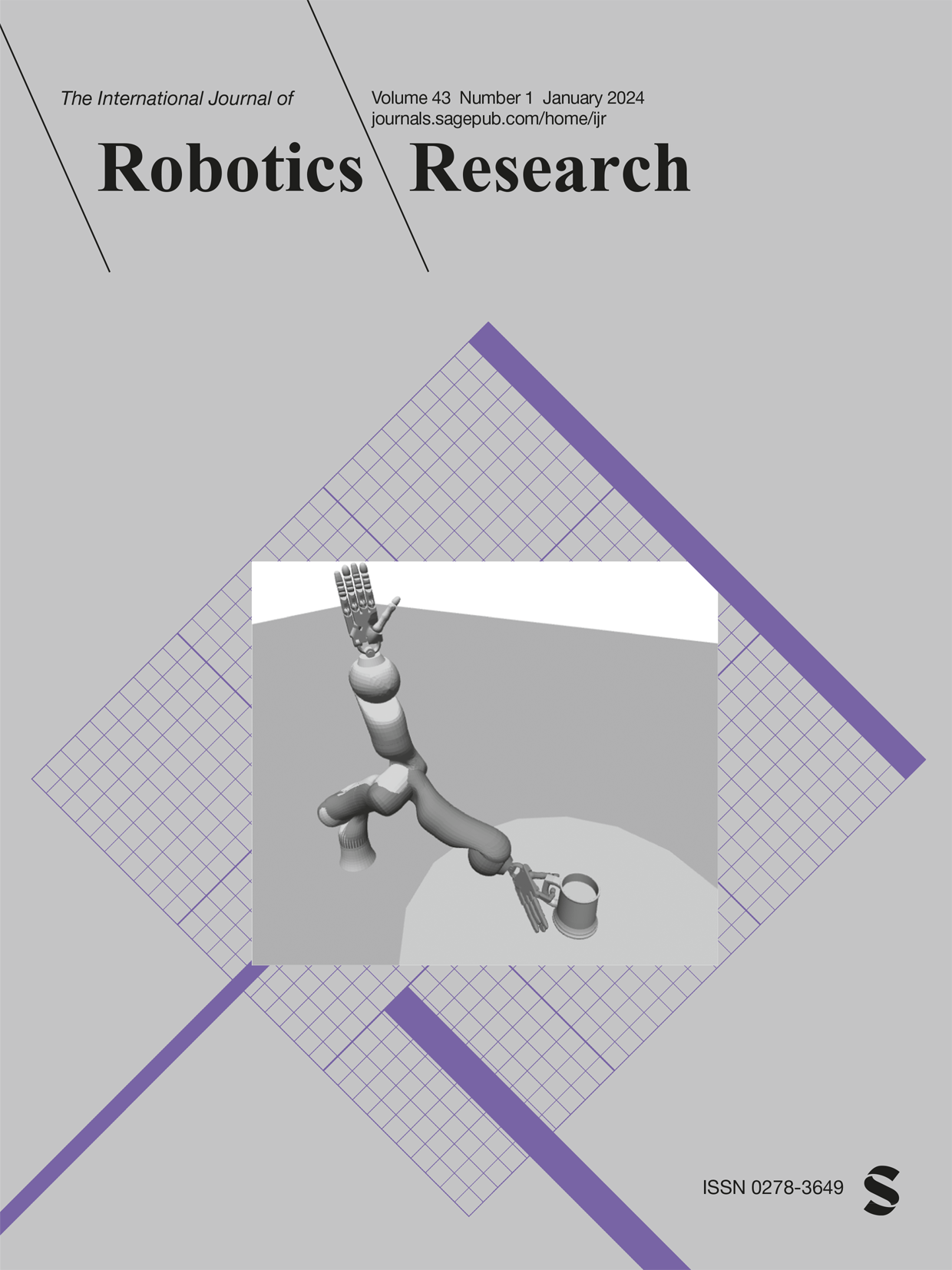基于端到端学习的社交机器人非语言社交行为生成
IF 5
1区 计算机科学
Q1 ROBOTICS
引用次数: 0
摘要
社交机器人通过握手或拥抱等非语言行为促进了人与人之间的互动。然而,传统的方法依赖于预编码的运动,是可预测的,并且可能会削弱机器人作为交互式代理的感知。为了解决这个问题,我们引入了一个基于seq2seq的神经网络模型,该模型以端到端的方式从人与人之间的互动中学习社会行为。为了降低长期行为生成过程中无效姿势序列的风险,我们采用了生成对抗网络(GAN)。在模拟环境中使用人形机器人Pepper对该方法进行了测试。考虑到评估社会行为生成成功的挑战,我们设计了新的指标来量化生成的行为与真实行为之间的差异。我们的分析揭示了不同网络对行为生成性能的影响,并比较了学习多种行为与学习单一行为的效果。我们预计我们的方法将在各个领域得到应用,包括家庭服务、导游、送货、教育和虚拟机器人,从而增强用户的互动和享受。本文章由计算机程序翻译,如有差异,请以英文原文为准。
Nonverbal social behavior generation for social robots using end-to-end learning
Social robots facilitate improved human–robot interactions through nonverbal behaviors such as handshakes or hugs. However, the traditional methods, which rely on precoded motions, are predictable and can detract from the perception of robots as interactive agents. To address this issue, we have introduced a Seq2Seq-based neural network model that learns social behaviors from human–human interactions in an end-to-end manner. To mitigate the risk of invalid pose sequences during long-term behavior generation, we incorporated a generative adversarial network (GAN). This proposed method was tested using the humanoid robot, Pepper, in a simulated environment. Given the challenges in assessing the success of social behavior generation, we devised novel metrics to quantify the discrepancy between the generated and ground-truth behaviors. Our analysis reveals the impact of different networks on behavior generation performance and compares the efficacy of learning multiple behaviors versus a single behavior. We anticipate that our method will find application in various sectors, including home service, guide, delivery, educational, and virtual robots, thereby enhancing user interaction and enjoyment.
求助全文
通过发布文献求助,成功后即可免费获取论文全文。
去求助
来源期刊
CiteScore
22.20
自引率
0.00%
发文量
34
审稿时长
6-12 weeks
期刊介绍:
The International Journal of Robotics Research (IJRR) has been a leading peer-reviewed publication in the field for over two decades. It holds the distinction of being the first scholarly journal dedicated to robotics research.
IJRR presents cutting-edge and thought-provoking original research papers, articles, and reviews that delve into groundbreaking trends, technical advancements, and theoretical developments in robotics. Renowned scholars and practitioners contribute to its content, offering their expertise and insights. This journal covers a wide range of topics, going beyond narrow technical advancements to encompass various aspects of robotics.
The primary aim of IJRR is to publish work that has lasting value for the scientific and technological advancement of the field. Only original, robust, and practical research that can serve as a foundation for further progress is considered for publication. The focus is on producing content that will remain valuable and relevant over time.
In summary, IJRR stands as a prestigious publication that drives innovation and knowledge in robotics research.

 求助内容:
求助内容: 应助结果提醒方式:
应助结果提醒方式:


